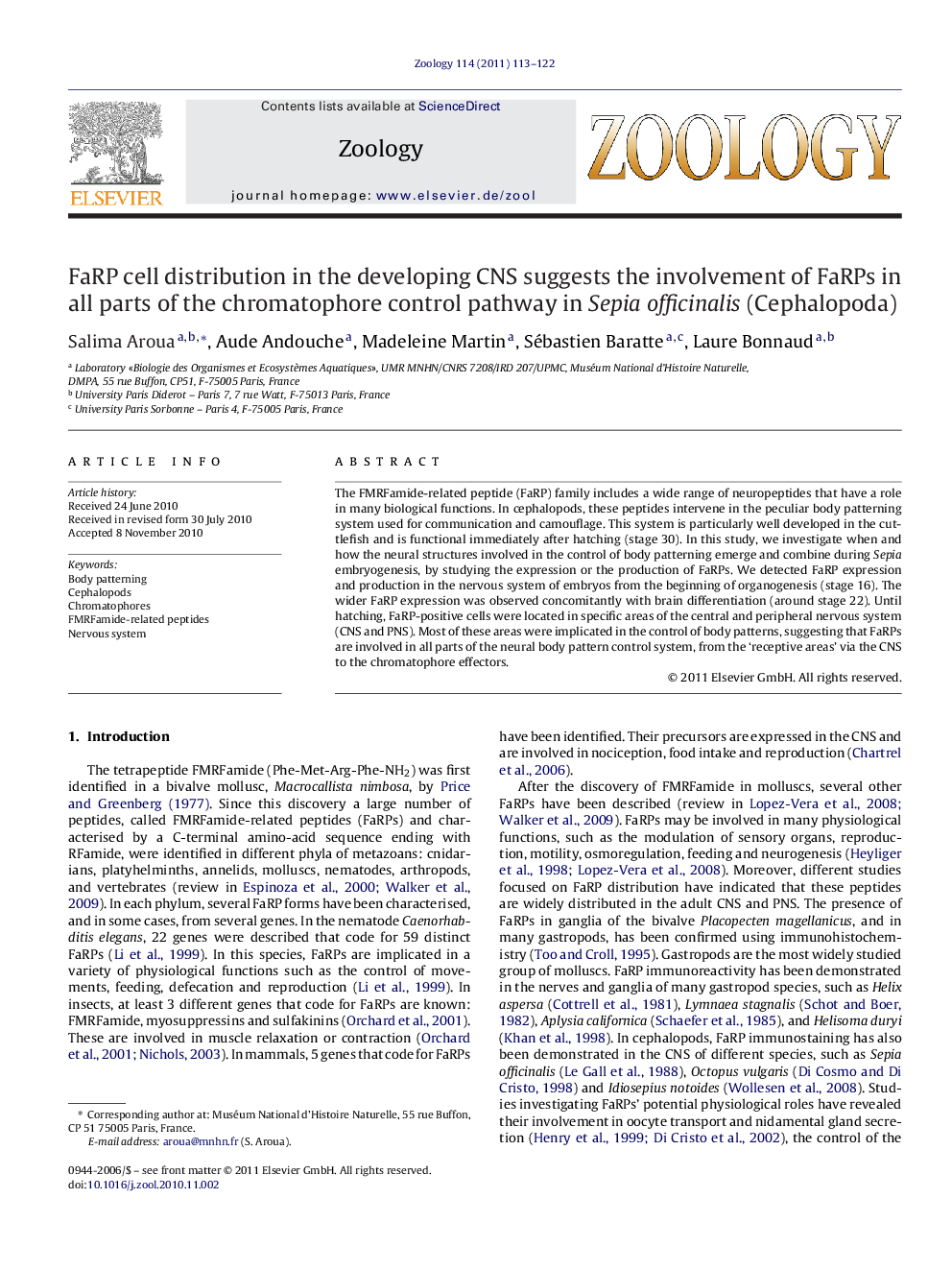| Article ID | Journal | Published Year | Pages | File Type |
|---|---|---|---|---|
| 2791270 | Zoology | 2011 | 10 Pages |
The FMRFamide-related peptide (FaRP) family includes a wide range of neuropeptides that have a role in many biological functions. In cephalopods, these peptides intervene in the peculiar body patterning system used for communication and camouflage. This system is particularly well developed in the cuttlefish and is functional immediately after hatching (stage 30). In this study, we investigate when and how the neural structures involved in the control of body patterning emerge and combine during Sepia embryogenesis, by studying the expression or the production of FaRPs. We detected FaRP expression and production in the nervous system of embryos from the beginning of organogenesis (stage 16). The wider FaRP expression was observed concomitantly with brain differentiation (around stage 22). Until hatching, FaRP-positive cells were located in specific areas of the central and peripheral nervous system (CNS and PNS). Most of these areas were implicated in the control of body patterns, suggesting that FaRPs are involved in all parts of the neural body pattern control system, from the ‘receptive areas’ via the CNS to the chromatophore effectors.
